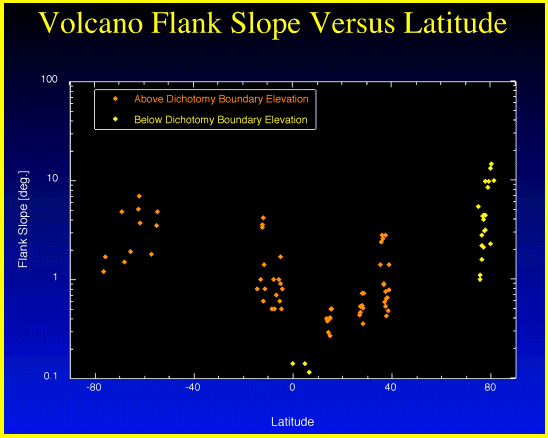

![]()

|
Using high accuracy digital elevation data
from MOLA, Susan Sakimoto and students
have measured the shapes of small (10-100
km across) shield volcanoes all over Mars.
Though much smaller than the well-known
giant shield volcanoes of Tharsis, the much
wider distribution of smaller cones enables the
study of regional and even hemispherical control
on the eruptive process. Sakimoto has found
several systematic and revealing trends among
the parameters she measured.
|

Volcano flank slope is a measure of magma-volatile (gas) interaction. Magma that contains a lot of volatiles tends to be more explosive and produce steeper volcanoes than magma that lacks volatiles. When flank slope was plotted against latitude (upper left), Sakimoto found that steeper volcanoes were at systematically higher latitudes. This can easily be explained by an increase of ground ice toward the poles, and is completely consistent with other studies, both observational (i.e., “terrain softening”) and theoretical (expected depth to the ice layer) which suggest increased ground ice at higher latitudes.

Typical small martian volcanoes at the same scale and at 10:1 vertical exaggeration
Contact: Susan Sakimoto, GSFC, Code 921 (sakimoto@core2.gsfc.nasa.gov)
![]()
![]() Back to Geodynamics Science Highlights
Back to Geodynamics Science Highlights
Responsible NASA official: Dr. Herbert Frey